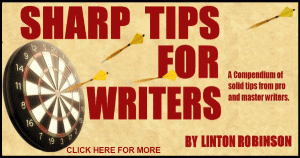Let  me illustrate a point that might be helpful to many with a quote from a master stylist. William Gibson in his “Mona Lisa Overdrive” not that it matters much.
me illustrate a point that might be helpful to many with a quote from a master stylist. William Gibson in his “Mona Lisa Overdrive” not that it matters much.
The first introduction to a character says she’s wearing, “…a muted jersey, something from the Paris season.”
Now look at that last phrase. Notice that it tells you a lot. Not much about the jersey, except that’s probably expensive. But how much about the character, the narrator, the situation? This is a very sophisticated way to describe a garment. These people are intimate with fashion and the rag trade. It tells you that they are around money and take it for granted. In a few words you told them all that.
You didn’t “show” them. And if the typical internet writing advice rumor nitwits decided to improve on the master, they would run off for paragraphs of description that are useless and anti-parsimonious. This is lean, knowing, and dimensional.
Don’t buy into the whole show/tell bullshit, basically. It just messes people up. Rather, buy into looking below the surface of the great writers, the ones you admire. They are also the ones that sweep you along with their style, so you have to read again, and then to read purposefully. Look at wording that are different from your own. And the chances that you would say a garment is “from the Paris season” are virtually zero. Judge the effects, see what you can assimilate. You do that best at a subconscious, not striving, level.
In one of my books I described an overweight woman as being a “half-sizes customer”. This is also sophisticated fashion talk, use of “half-size” for BBW instead of “plus-size”. So it tells us something, and also sounds knowing. Trouble is, over half of your readers might not understand it. Thing is, though, is that really a problem? Maybe if that’s the only clue to the description. If you said “a stocky woman haunting the half-size racks” it would not need to do that… but would, again, indicate an awareness of the clothing trade.
A guy hears a car approaching and says that it “needs its points reset”. What does that tell you about the guy, about the car, perhaps even the driver? And so on.
And once again, you don’t need to be thinking in such terms as you write. Perhaps as you edit. Mostly, what I’m telling you is about careful and parsimonious (less is more) word choice. Of how little you can tell people, yet tell them much. Much of this works toward building confidence and credibility. The narrator (who is also the character on the spot, the one seeing the woman in her jersey, in this case) gains prestige in the reader’s eye, credibility and the mandate to suspend and command the reader’s belief.
